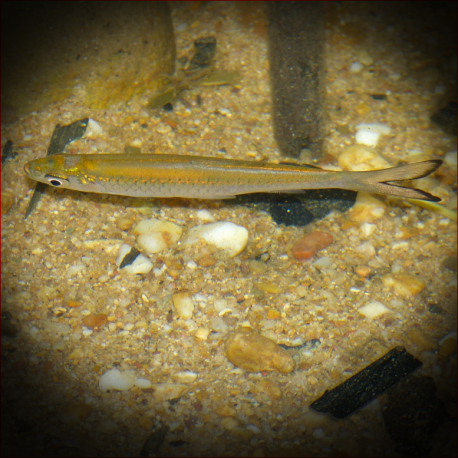More info
Datasheet
| Minimum Tank Size | 120 litres / 31.70 US gallons |
| Maximum Size | 16.2cm / 6.38inches |
| Temperature | 20°C / 68.00°F - 26°C / 78.80°F |
| Hardness | 1.01dgH / 18ppm - 12.05dgH / 215ppm |
| pH | 4.0-7.5 |
General Description
The Rasbora dusonensis, initially misidentified and confused with other species, was accurately redescribed in 2013. Belonging to the family Cyprinidae, it can reach a size of 16.2 cm. The species is native to Sumatra, Peninsular Malaysia, and Borneo, thriving in various habitats including river channels and blackwaters.
Aquarium Setup
Maintaining R. dusonensis in a community aquarium requires a schooling group of at least 6 individuals. A well-planted tank resembling a flowing river, complete with rocks, driftwood, and aquatic plants, is recommended. Water conditions necessitate a pH of 4.0-7.5, hardness of 18-215 ppm, and temperatures between 20-26°C. Regular water changes are crucial to prevent organic waste buildup.
Behaviour
Known for its peaceful demeanor, this species thrives in a community setup. Group living reduces stress and promotes natural behavior, with males displaying competitive antics to attract females.
Feeding and Diet
In the wild, R. dusonensis mainly feeds on aquatic and terrestrial invertebrates. In captivity, a varied diet including live and frozen foods like Daphnia and Artemia enhances coloration and encourages breeding behavior. Dried foods can be offered but should not be the sole diet.
Reproduction & Dimorphism
Breeding in captivity may involve an egg-scattering strategy without parental care. Adequate hiding spots for eggs are crucial to prevent adult predation. Females are typically rounder-bellied and slightly larger than males.
Habitat and Distribution
The species is found in river channels, blackwaters, and other water bodies across Sumatra, Peninsular Malaysia, and Borneo. Its habitat comprises areas with fallen leaves, twigs, and branches, with water conditions ranging from murky neutral pH to acidic blackwater with low conductivity.

